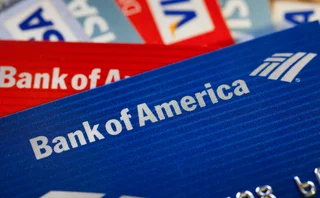NYSE to Put Cameras on Trading Floor
EXCHANGE TECHNOLOGIES
NEW YORK—The clandestine world of Wall Street will be a bit more transparent during the second quarter when the New York Stock Exchange (NYSE) installs cameras on its trading floor in an effort to avoid regulatory snafus, NYSE officials say.
The initiative will begin with a pilot phase that will place the cameras at 20 spots throughout the floor for approximately 18 months. "It's another tool to find out what's happening in the trading crowd," says Brendan Intindola, an exchange spokesperson.
The move comes after the U.S. Securities and Exchange Commission (SEC) and the NYSE last year took disciplinary actions against seven member firms and 15 individuals for violating exchange rules and SEC regulations. Those firms include Morgan Stanley, which paid $13 million in fines for, among other things, the inadequate monitoring of correspondence like e-mails and faxes and failing to process fingerprints and maintain background check databases on new hires, according to the NYSE. The firestorm over these violations prompted the exchange to consider the camera project in order to keep a closer eye on trading floor participants.
It is unclear at this point whether specific exchange personnel will be trained to monitor these cameras for infractions, Intindola says, or whether existing staff will peruse the footage. It is unlikely that monitoring will be a constant operation and will instead be used after the fact.
"There might be some random monitoring of the sound and images captured but it's likely to be used once the problem has been identified," Intindola says. In the equities market in particular, where "there are not lots of hand signals" the exchange would be "looking at images on the screens or keystrokes."
Providing a secure system is a top priority given that "you see stories every day about some sort of electronic security breach," Intindola says. "There are always concerns about e-security, from a performance point of view, but also from assaults from the outside." The exchange has not yet encountered any backlash from privacy advocates, he says.
At this point, it's "too early to tell" if the project will move beyond the planned 20 monitoring stations, but that will be under review after the pilot, Intindola says. "We would review it in terms of its effectiveness and make a determination from there," he adds.
The exchange declined to provide further details on exactly what technology will be in use or what vendor will provide the equipment. "We don't generally comment on what vendors we use," Intindola says.
Chloe Albanesius
Only users who have a paid subscription or are part of a corporate subscription are able to print or copy content.
To access these options, along with all other subscription benefits, please contact info@waterstechnology.com or view our subscription options here: http://subscriptions.waterstechnology.com/subscribe
You are currently unable to print this content. Please contact info@waterstechnology.com to find out more.
You are currently unable to copy this content. Please contact info@waterstechnology.com to find out more.
Copyright Infopro Digital Limited. All rights reserved.
As outlined in our terms and conditions, https://www.infopro-digital.com/terms-and-conditions/subscriptions/ (point 2.4), printing is limited to a single copy.
If you would like to purchase additional rights please email info@waterstechnology.com
Copyright Infopro Digital Limited. All rights reserved.
You may share this content using our article tools. As outlined in our terms and conditions, https://www.infopro-digital.com/terms-and-conditions/subscriptions/ (clause 2.4), an Authorised User may only make one copy of the materials for their own personal use. You must also comply with the restrictions in clause 2.5.
If you would like to purchase additional rights please email info@waterstechnology.com
More on Trading Tech
Removal of Chevron spells t-r-o-u-b-l-e for the C-A-T
Citadel Securities and the American Securities Association are suing the SEC to limit the Consolidated Audit Trail, and their case may be aided by the removal of a key piece of the agency’s legislative power earlier this year.
After acquisitions, Exegy looks to consolidated offering for further gains
With Vela Trading Systems and Enyx now settled under one roof, the vendor’s strategy is to be a provider across the full trade lifecycle and flex its muscles in the world of FPGAs.
Enough with the ‘Bloomberg Killers’ already
Waters Wrap: Anthony interviews LSEG’s Dean Berry about the Workspace platform, and provides his own thoughts on how that platform and the Terminal have been portrayed over the last few months.
BofA deploys equities tech stack for e-FX
The bank is trying to get ahead of the pack with its new algo and e-FX offerings.
Pre- and post-trade TCA—why does it matter?
How CP+ powers TCA to deliver real-time insights and improve trade performance in complex markets.
Driving effective transaction cost analysis
How institutional investors can optimize their execution strategies through TCA, and the key role accurate benchmarks play in driving more effective TCA.
As NYSE moves toward overnight trading, can one ATS keep its lead?
An innovative approach to market data has helped Blue Ocean ATS become a back-end success story. But now it must contend with industry giants angling to take a piece of its pie.
BlackRock, BNY see T+1 success in industry collaboration, old frameworks
Industry testing and lessons from the last settlement change from T+3 to T+2 were some of the components that made the May transition run smoothly.







